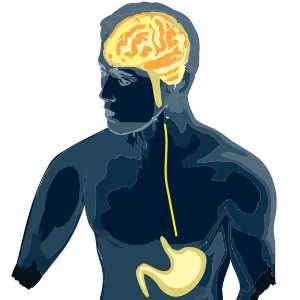Aug 10, 2019
Version 1
SPARC - Acute surgery and experimentation of the gastrointestinal tract and vagus nerve in the ferret V.1
- Charles C Horn1,
- Derek M. Miller1,
- Stephanie Fulton1,
- Bill J. Yates1,
- Lee E. Fisher1,
- Ameya C. Nanivadekar1
- 1University of Pittsburgh
- SPARCTech. support email: info@neuinfo.org

External link: https://www.biorxiv.org/content/10.1101/607242v2
Protocol Citation: Charles C Horn, Derek M. Miller, Stephanie Fulton, Bill J. Yates, Lee E. Fisher, Ameya C. Nanivadekar 2019. SPARC - Acute surgery and experimentation of the gastrointestinal tract and vagus nerve in the ferret. protocols.io https://dx.doi.org/10.17504/protocols.io.6a7hahn
License: This is an open access protocol distributed under the terms of the Creative Commons Attribution License, which permits unrestricted use, distribution, and reproduction in any medium, provided the original author and source are credited
Protocol status: Working
We use this protocol and it's working
Created: August 08, 2019
Last Modified: August 10, 2019
Protocol Integer ID: 26687
Keywords: surgery, gastrointestinal tract, stomach, intestine, vagus nerve, electrophysiology, emesis
Abstract
This protocol is used for acute surgery and electrophysiological experimentation on the anesthetized ferret, specifically for manipulating the vagus nerve and gastrointestinal tract nerve stimulation and myoelectric recording.
Funding: This protocol was developed with funding from the NIH Common Fund’s Stimulating Peripheral Activity to Relieve Conditions (SPARC) program (Award U18TR002205). To learn more about the SPARC program, visit https://sparc.science.
Guidelines
animal should be monitored for stability of respiration, heart rate, blood pressure, and temperature
Materials
MATERIALS
Vetbond3M corporation
30 ml barostat balloonMUI ScientificCatalog #CT-BP-1017
3-point retractorGeorge TiemannCatalog #110-3445
Remove food
Remove food
Remove food from the home cage 3 h before anesthesia 03:00:00
Measure body weight
Preparation: Before first incision
Preparation: Before first incision
Induce anesthesia using isoflurane in a chamber, then move to a facemask (1 to 2%).
Shave abdomen and ventral neck.
Place ferret supine on table. Connect EKG leads and place rectal probe for recording body temperature (keep at 36 to 40C).
Monitor heart rate and body temperature throughout procedure and testing.
Equipment
CED Power 1401 running Spike 2 version 7.15
NAME
electrophysiology recording
TYPE
CED
BRAND
CED Power 1401 running Spike 2 version 7.15
SKU
First incisions: Endotrachel tube and blood pressure catheter
First incisions: Endotrachel tube and blood pressure catheter
Make a ~4cm incision in the ventral neck and dissection the trachea.
Insert an endotracheal tube and coonect to pressure transducer to monitor respiration rate.
Equipment
Small Animal Ventilator
NAME
ventilator with expiration pressure transducer
TYPE
CWe
BRAND
SAR-830/AP
SKU
Make a ~3 cm incision on the medial surface of the right leg.
Place blood pressure catheter in left femoral artery.
Equipment
Direct Blood Pressure System
NAME
pressure transducer
TYPE
Kent Scientific
BRAND
DBP1000
SKU
Abdominal Surgery: Placement of electrodes and gastric tube/balloon
Abdominal Surgery: Placement of electrodes and gastric tube/balloon
Make an incision in the midline abdominal muscle to expose the organs.
Open abdominal cavity using a 3-point retractor (Balfour pediatric retractor, George Tiemann), applied to the lateral edges of the abdominal incision and sternum. This retractor is elevated using a vertical post attached to a surgical board under the animal.
Make incision (~0.5 cm) on the left lateral edge of the gastric fundus and insert gastric catheter with the tip resting in the antrum; in parallel with the gastric catheter is a 30 ml barostat balloon. Place a purse-string suture around the incision and tied. And, additional knot is made around the catheter and the free ends of this knot and purse-string suture are tied together. Finally surgical glue (Vetbond) is applied to the incision area.
In some experiments, a cuff electrode is placed on either the ventral or dorsal abdominal vagus nerve trunk. Suture a ground electrode lead to connective tissue on the greater curvature of the stomach.
This is accomplished by caudal retraction of the stomach and retraction of the liver to the right side of the animal using saline moistened gauze. In this position, the esophagus and vagi become accessible.
Place planar electrodes on surface of stomach and duodenum using 8-0 silk suture. Suture a ground electrode lead to connective tissue on the greater curvature of the stomach
Test electrode impedances.
Equipment
Grapevine Neural Interface Processor and a Nano2 recording headstage
NAME
electrophysiological recording and stimulation
TYPE
Ripple LLC
BRAND
Grapevine Neural Interface Processor and a Nano2 r
SKU
Testing
Testing
Following this initial setup various tests can be performed, including testing the effects of stomach distension, nerve electrical stimulation, and emetine infusion on gastrointestinal myoelectric responses. Emetine is a chemical emetic agent that produces retching and emesis when infused into the stomach and small intestine. Because emesis can produce strong abdominal contractions it is recommended that the abdominal incision is securely sutured.
Gastric distension trials
Gastric distension trials
Measure impedances of electrodes. Record 5 minutes baseline before and after each distension trial.
Equipment
Grapevine Neural Interface Processor and a Nano2 recording headstage
NAME
electrophysiological recording and stimulation
TYPE
Ripple LLC
BRAND
Grapevine Neural Interface Processor and a Nano2 r
SKU
Fill balloon using a syringe pump with 5 ml, 10 ml, or 20 ml saline. Infusion rate is 10ml/min. Saline is held in balloon for 5 minutes before deflation.
Emetine Trial
Emetine Trial
Record 20 min of baseline gastrointestinal myoelectric activity.
Equipment
Grapevine Neural Interface Processor and a Nano2 recording headstage
NAME
electrophysiological recording and stimulation
TYPE
Ripple LLC
BRAND
Grapevine Neural Interface Processor and a Nano2 r
SKU
Use a syringe pump to infuse 5 mg/kg emetine into the stomach. Record for 1 hour.
Cuff Stim Trials
Cuff Stim Trials
Apply desired stimulation parameters (pulse width, current applitude, frequency) to abdominal vagus while recording. Record baseline data before and after trials and meaure impedances at the end.
Equipment
Grapevine Neural Interface Processor and a Nano2 recording headstage
NAME
electrophysiological recording and stimulation
TYPE
Ripple LLC
BRAND
Grapevine Neural Interface Processor and a Nano2 r
SKU
Open abdomen and remove electrodes, balloon, and catheter.
Euthanize animal with intracardiac euthasol injection.
